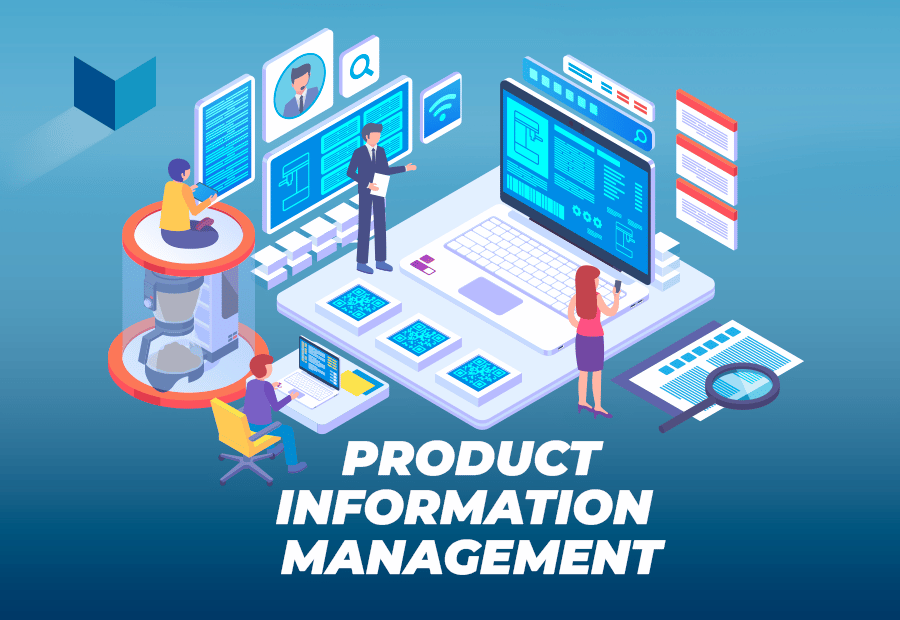Why PIM Solutions are Essential for Successful E-commerce?
With the rapid advancement of technology, the business world has undergone major changes. With the rise of e-commerce, it has become increasingly important to handle product data efficiently. Product Information Management PIM is a solution that can make this job simpler and smoother. In this article, we will discuss the essential features of a PIM solution that can make the job of an e-commerce manager effortless.
What is PIM?
PIM stands for Product Information Management. A PIM solution is a centralized platform that empowers retailers and vendors to gather, organize, enrich, and distribute their product data to multiple e-commerce and sales channels.
The Importance of PIM in E-commerce
Managing product data can become tedious, especially for e-commerce managers. The product data contains essential information about the product, such as descriptions, technical details, and specifications. This data needs to be up-to-date and consistent across all sales channels. PIM solutions help manage the product data efficiently, saving time and effort for the e-commerce managers.
Essential PIM Features
There are several PIM features that are essential for successful e-commerce. Below are the top features that all PIM systems should offer:
1. Product Data Management
PIM solutions help track, gather, organize, and export product data efficiently. Managing product data is one of the most essential PIM features. With PIM, e-commerce managers can easily track and manage data without spending more time on it.
2. Digital Asset Management Capabilities
In addition to storing product information, many PIMs offer the ability to manage digital assets such as marketing videos, images, audio clips, and more. Storing these assets in a PIM can help improve the marketing strategy and keep the entire organization up-to-date.
3. Bulk Product Data Editing
PIMs are designed to manage large amounts of product data. Often, there are consistencies across products that would be time-consuming to update individually. Having the ability to edit product attributes in bulk saves time and ensures consistency and accuracy in product data.
4. Workflow Management and Approval Processes
Workflow management of PIM plays a huge part in the organization of data and managing it with accuracy. This feature provides specific orders to the tasks. The proper approval process of PIM workflow management is essential to ensure data accuracy and consistency. Workflow management and approval processes help in organizing data, collaboration, boosting productivity, eliminating inaccuracies, saving time, notifying about missing data, brand protection, and faster product launch.
5. Custom User Roles
One great benefit PIM software offers for growing teams is the ability for anyone, across the entire organization, to access product information that’s guaranteed to be accurate and up-to-date. But what if different members of different teams need different levels of access and permissions? Assigning permissions to every single user individually is a time suck no one wants to, or should have to take on. That’s why another must-have feature to look for in a PIM is the ability to create custom user roles that you can then assign to users. You should be able to decide what permissions are relevant to each role, and then assign team members to the role that correlates with the level of access they need to do their job. This feature will save you time that you can spend helping your business grow and thrive.
6. Import and Export Functions
Importing data into your PIM needs to be fast and simple, which is why it’s a must for it to be able to save profiles after the first time you map importing from a new source, and automatically import data from that source as needed afterward. Your PIM should also have multiple export options, allowing you to receive data exported from the PIM overview in CSV or XLSX format — or even as a beautiful, automatically generated PDF product sell sheet that you can take to meetings.
7. API Connectivity and Integrations
A PIM is most effective when you can use it as a central source of truth within your organization. These systems are excellent for tracking your inventory, finding patterns in customer data, and managing product data. This data is invaluable, but it won’t be much use to you if the PIM doesn’t integrate with your existing CMS or ERP. When researching PIMs, we recommend that you take note of which systems can integrate with all your existing digital tools.
8. Analytical Tools
The data collected by your PIM is an amazing resource for your company. This information lets you find sales trends, identify key customers, and understand more about your consumers. Some PIMs simply collect this data and leave it to other programs to analyze, but if you’re looking for a turnkey solution then we recommend selecting a system with built-in analytics. Analyzing and managing your data within a single system helps reduce the risk of misinterpretation and can streamline these processes for your business.
Conclusion
In conclusion, a PIM solution is essential for successful e-commerce. H360 solutions help manage product data efficiently, saving time and effort for e-commerce managers. The essential PIM features include product data management, digital asset management capabilities, bulk product data editing, workflow management and approval processes, custom user roles, import and export functions, API connectivity and integrations, and analytical tools. If you’re looking for ways to increase efficiencies in e-commerce operations and improve the accuracy of your product data, contact H360 and arrange a call with our PIM experts so we can provide recommendations for you.
Related Posts
Leave a Reply Cancel reply
Categories
Recent Posts
- How Retail SaaS No-Code Solutions Accelerate Digital Transformation
- Unlocking Customer Loyalty: The Power of CX Personalization and CRO
- Discover how H360 marketplace solution revolutionized Fnac Tunisia’s website
- Darty.tn: Enhancing User Experience with Sylius and React JS
- Optimizing Your Store’s Search with H360 Marketplace
Recent Comments
Categories
- Non classé (3)
- Technologie (9)




